2019 | Performance with various objects and audio/video | Performance: 20 min | Audio/video: 20 min | Photos: Maurine Tric – Cité Internationale des Arts, Paris
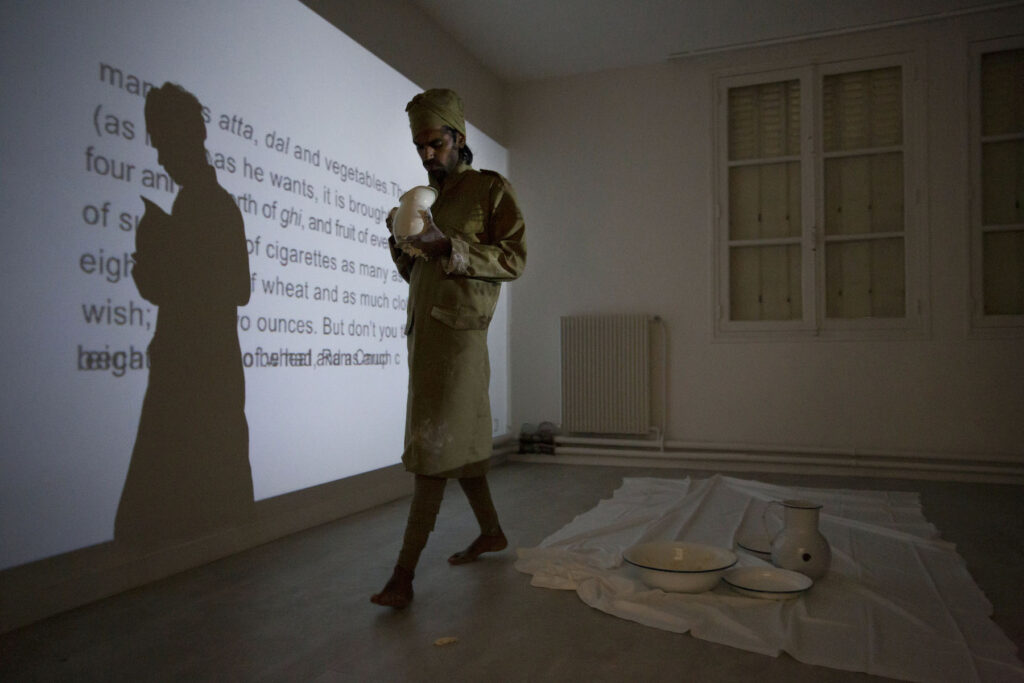
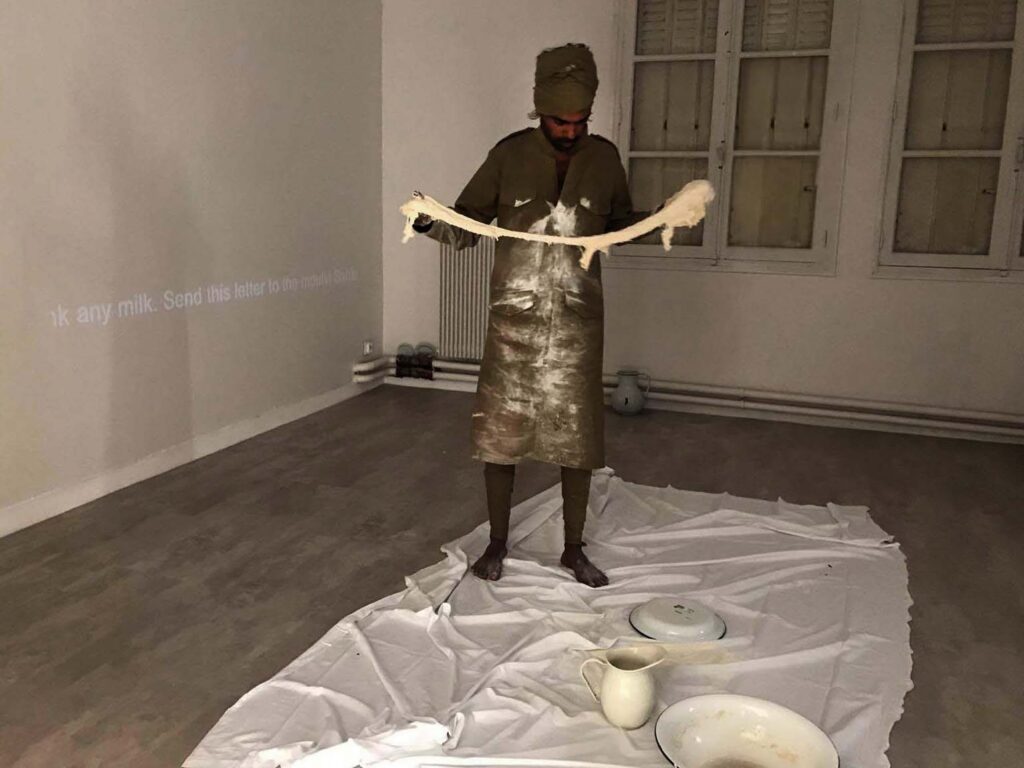
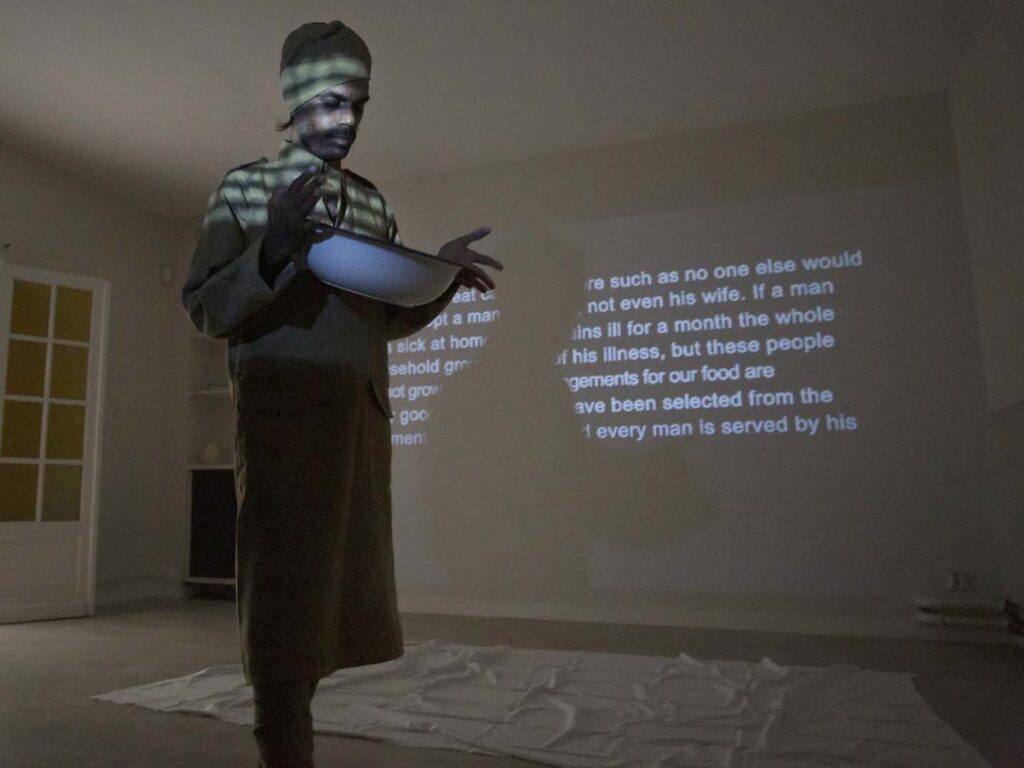
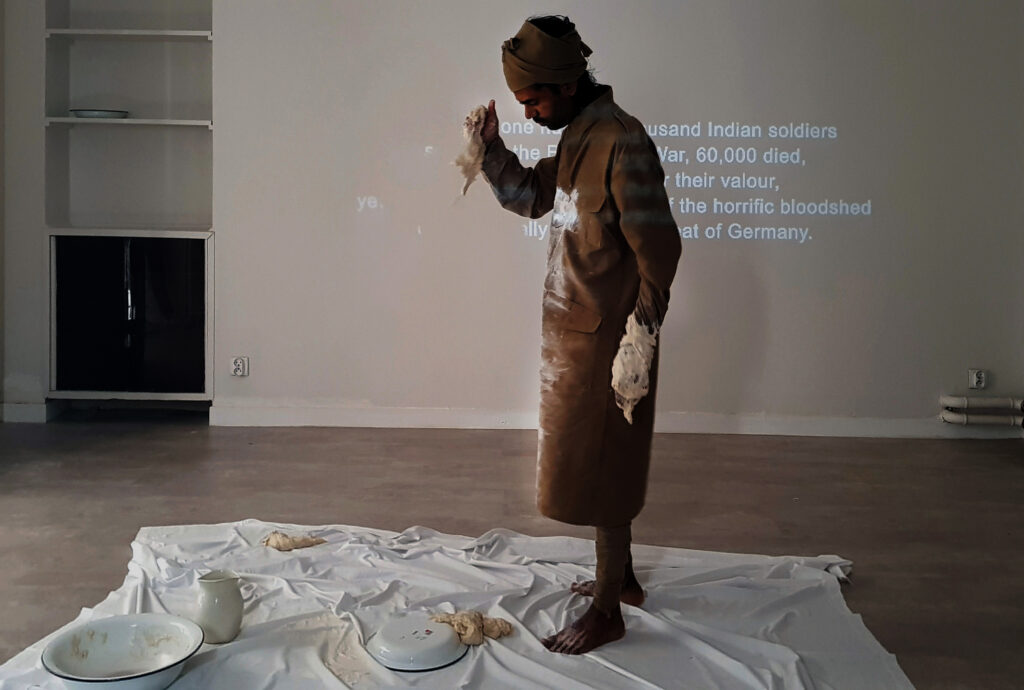
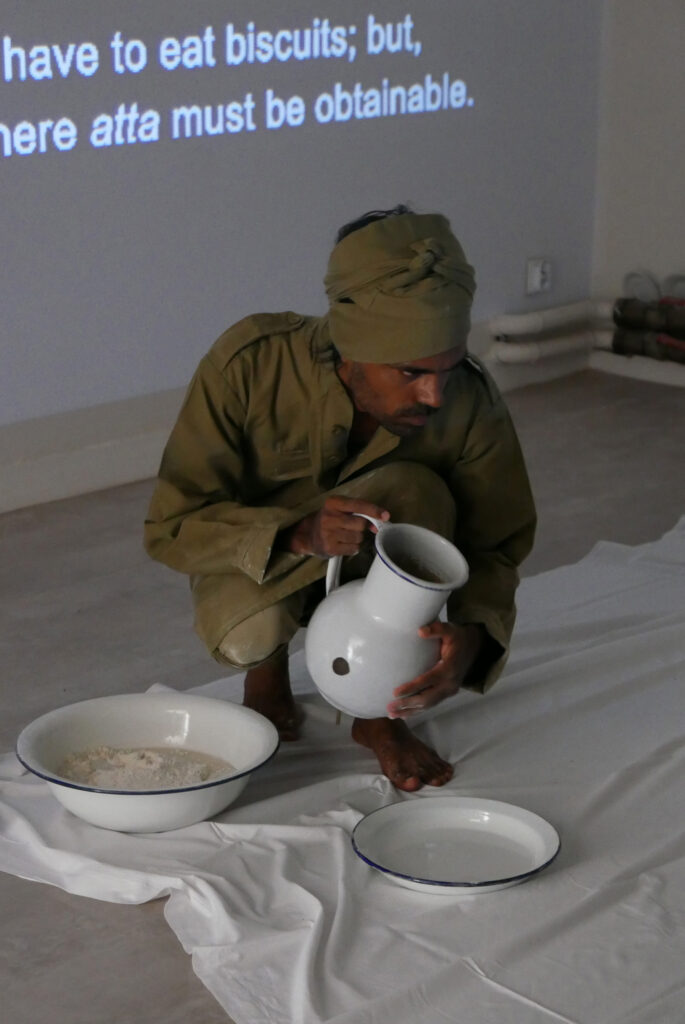
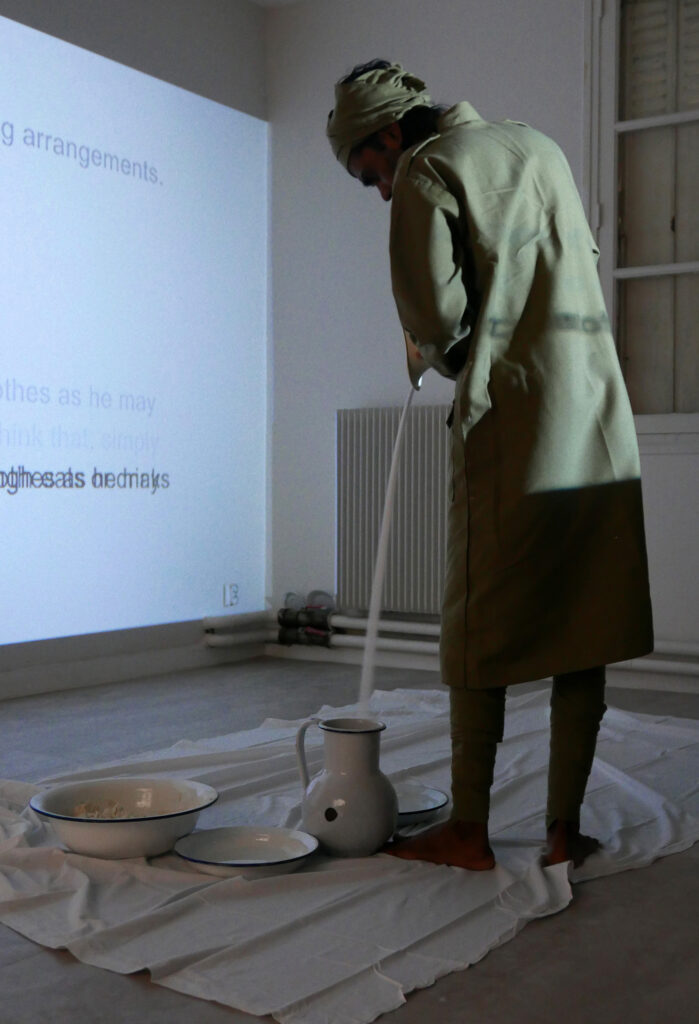
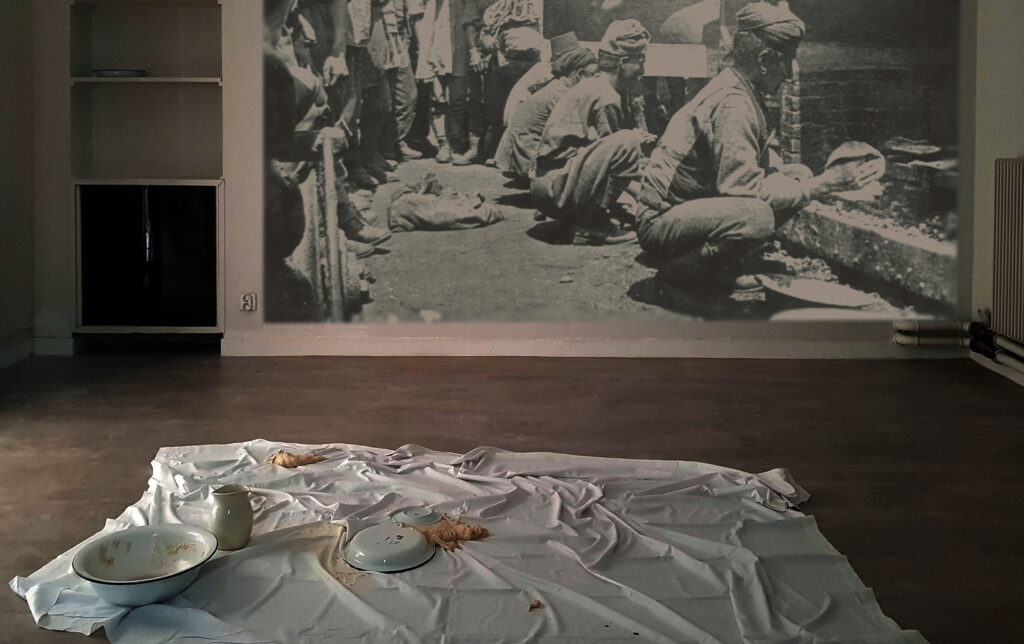
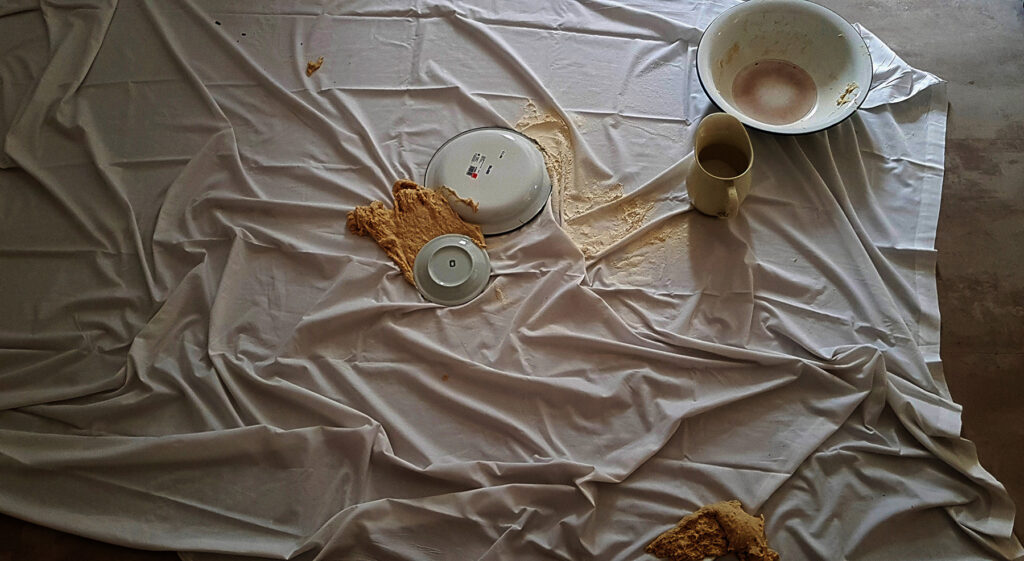
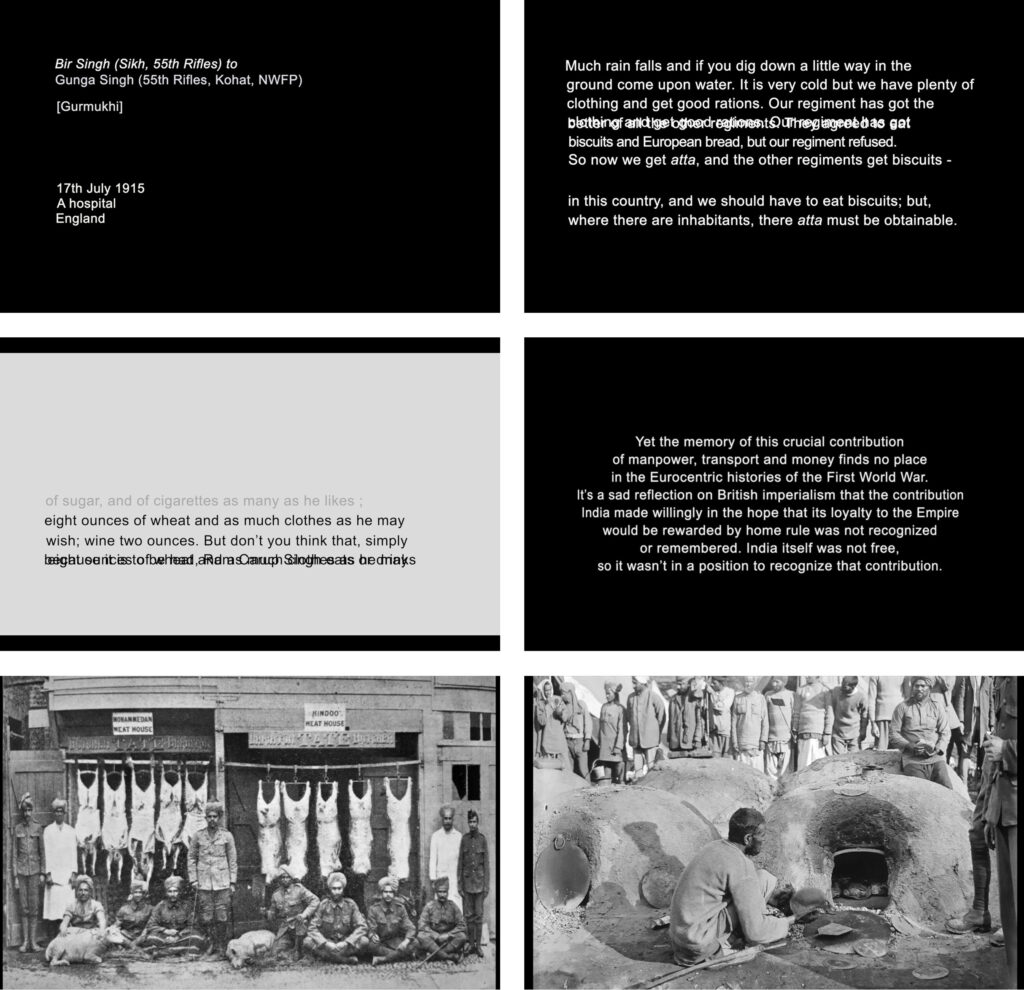
They agreed to eat biscuits and European bread, but our regiment refused, is an extract from a letter written in Gurmukhi by an Indian soldier, Bir Singh (Sikh, 55th Rifles Regiment) to his compatriot, Gunga Singh (55th Rifles Regiment, Kohat, NWFP). The letter dated 17th July 1915, was sent from a hospital in England to India during the First World war. This excerpt along with other letters, is part of the book, ‘Indian Voices of the Great War: Soldiers’ Letters, 1914-18’ by David Omissi. The work consists of Baptist performing near an audio/video projection of Bir Singh’s letter. He is dressed in an attire that takes inspiration from archival photos of what Indian soldiers wore in the First World War.
The performance is inspired by the food and eating habits of the British Indian Army. Food, a fundamental and basic requirement that keeps us alive, takes on an extremely important role to survive in hostile war territories. Food has been used as a form of resistance and a weapon of war. In the performance, the soldier is seen moving both frantically and then calmly, kneading ‘atta’ (wheat flour) in preparation for ‘chapattis’ (Indian bread) with the help of salt and water. The salt draws a paradox to the ‘Dandi Satyagraha’ (Salt March), that took place from March to April 1930 in India, an act of civil disobedience led by Gandhi to protest British rule in India. The artwork’s title draws our attention to the resistance strategy by the colonial troops, who found themselves in foreign lands. They were trying to get a sense of home by resisting biscuits and bread, which were primarily see as western, when compared to the ‘chapatti’.
In 2019, They agreed to eat biscuits and European bread, but our regiment refused, was first realised as part of the symposium, ‘War, Art and Visual Culture’ – An International Symposium on the Art and Visual Culture of War, Conflict and Political Violence at SH Ervin Gallery, Sydney. The performance was a juried selection, and the symposium was in partnership with the Australian War Memorial (AWM), Canberra and an international academic team. Since then, the work has been performed in various institutions such as, Stamford Arts Centre, Singapore; Villa Radet, Cité Internationale des Arts, Paris; In Flanders Fields Museum and Frac des Pays de la Loire, Carquefou, amongst others.